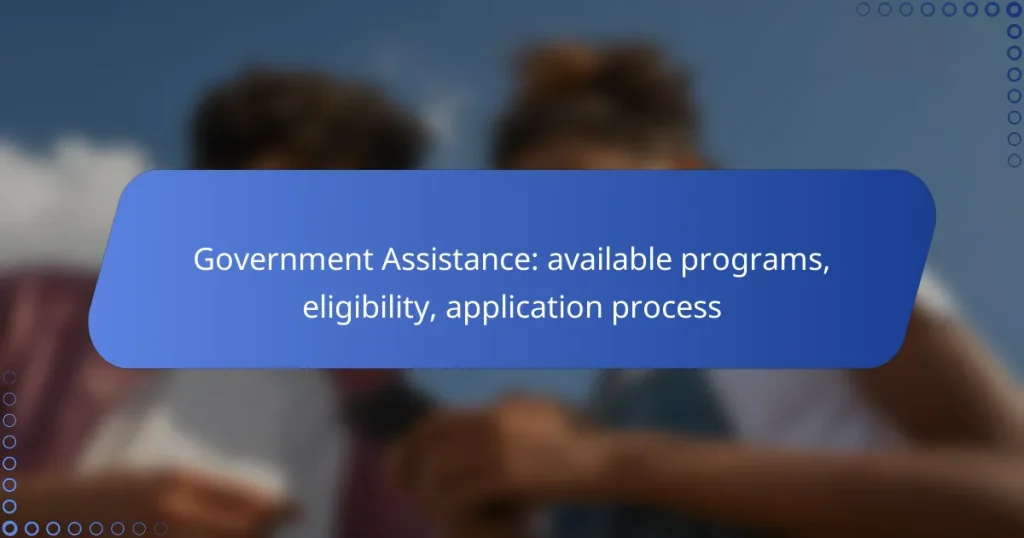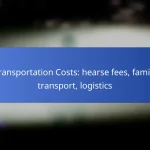Canada provides a range of government assistance programs aimed at supporting individuals and families facing financial difficulties. These programs cover areas such as unemployment, social welfare, child support, and disability, ensuring access to vital resources. Eligibility criteria vary based on factors like income and residency, and the application process usually involves completing an online form specific to each program.
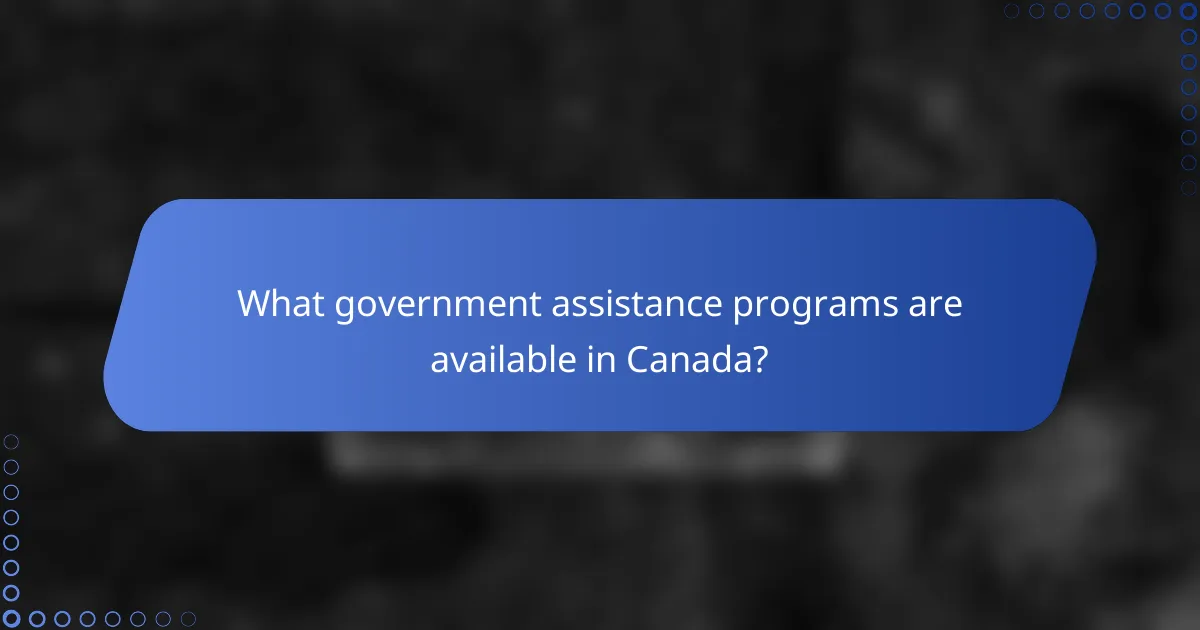
What government assistance programs are available in Canada?
Canada offers various government assistance programs designed to support individuals and families in need. These programs address unemployment, social welfare, child support, and disability, ensuring that citizens have access to essential resources during challenging times.
Canada Emergency Response Benefit (CERB)
The Canada Emergency Response Benefit (CERB) was introduced to provide financial support to individuals who lost income due to the COVID-19 pandemic. Eligible applicants could receive a monthly payment for a limited duration, helping them cover essential expenses.
Although CERB is no longer available, it served as a model for future assistance programs. Individuals should stay informed about any new initiatives that may offer similar support in times of crisis.
Employment Insurance (EI)
Employment Insurance (EI) provides temporary financial assistance to unemployed Canadians who have lost their job through no fault of their own. To qualify, applicants must have worked a minimum number of hours in insurable employment and paid EI premiums.
EI benefits can vary based on the applicant’s previous earnings and the unemployment rate in their region. It’s crucial to apply as soon as possible after job loss to avoid delays in receiving benefits.
Social Assistance Programs
Social assistance programs, often referred to as welfare, offer financial support to individuals and families with low income or no income. Each province and territory administers its own social assistance program, with varying eligibility criteria and benefit amounts.
Applicants typically need to demonstrate financial need and may be required to participate in employment programs or job training. Understanding local regulations is essential for navigating these programs effectively.
Child Benefit Programs
Child benefit programs in Canada provide financial support to families raising children. The Canada Child Benefit (CCB) is a tax-free monthly payment to eligible families, aimed at helping with the costs of raising children under the age of 18.
Eligibility for the CCB is based on family income, and the amount received can vary significantly. Families should apply through the Canada Revenue Agency (CRA) to ensure they receive the correct benefits.
Disability Support Programs
Disability support programs assist individuals with disabilities by providing financial aid and resources to improve their quality of life. These programs can include direct financial assistance, access to specialized services, and support for employment opportunities.
Eligibility criteria often require medical documentation of the disability and an assessment of financial need. It’s important for applicants to explore both federal and provincial programs to find the best fit for their specific situation.
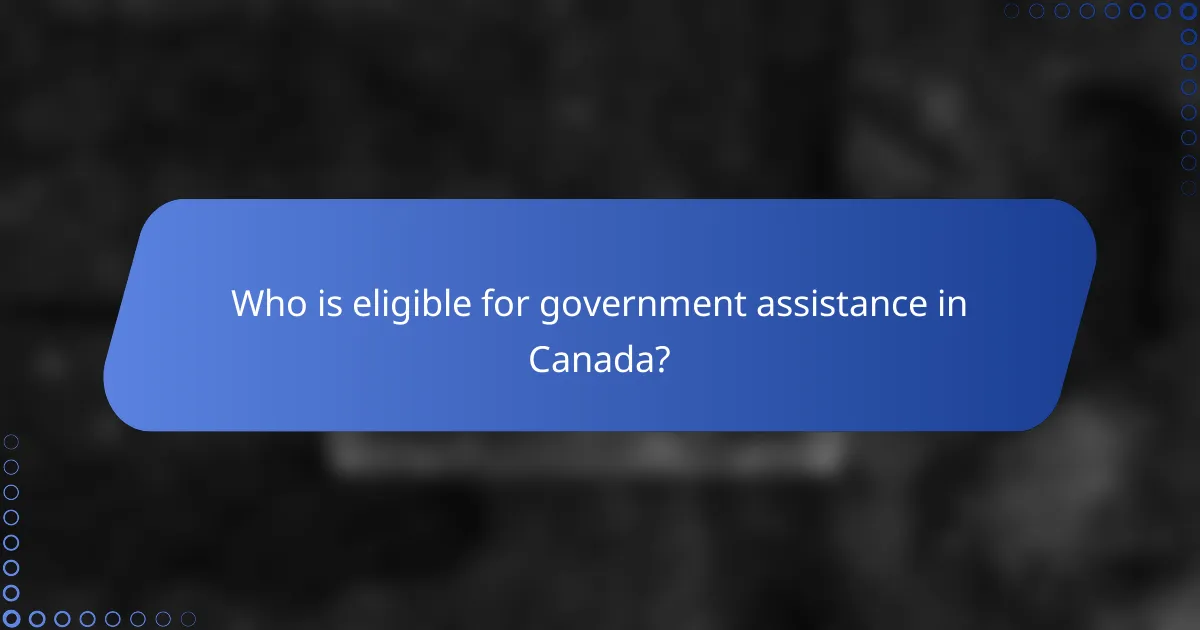
Who is eligible for government assistance in Canada?
Eligibility for government assistance in Canada typically depends on various factors including income, residency, age, and disability status. Understanding these criteria can help individuals determine their qualification for different support programs.
Income-based eligibility
Income-based eligibility is a primary factor in determining access to government assistance. Many programs require applicants to demonstrate that their income falls below a certain threshold, which can vary by province and program type.
For example, low-income families may qualify for benefits like the Canada Child Benefit, while individuals with limited income might access programs such as the Guaranteed Income Supplement. It’s essential to check the specific income limits for each program, as they can change annually.
Residency requirements
Residency requirements dictate that applicants must be legal residents of Canada to qualify for government assistance. This generally means being a Canadian citizen or a permanent resident.
Some programs may have additional stipulations, such as requiring applicants to reside in a specific province for a certain period. It’s advisable to verify the residency criteria for each assistance program to ensure compliance.
Age restrictions
Age restrictions are common in government assistance programs, with many targeting specific age groups. For instance, seniors may qualify for programs like Old Age Security, while youth might access support through programs designed for young adults.
Eligibility often hinges on reaching a certain age, such as 65 for senior benefits. Always check the age requirements for each program to avoid application issues.
Disability criteria
Disability criteria are crucial for programs aimed at supporting individuals with disabilities. Applicants typically need to provide medical documentation to demonstrate their disability status.
Programs like the Disability Tax Credit require that the disability significantly impairs daily living activities. Understanding the specific criteria and documentation needed can streamline the application process for those seeking assistance.
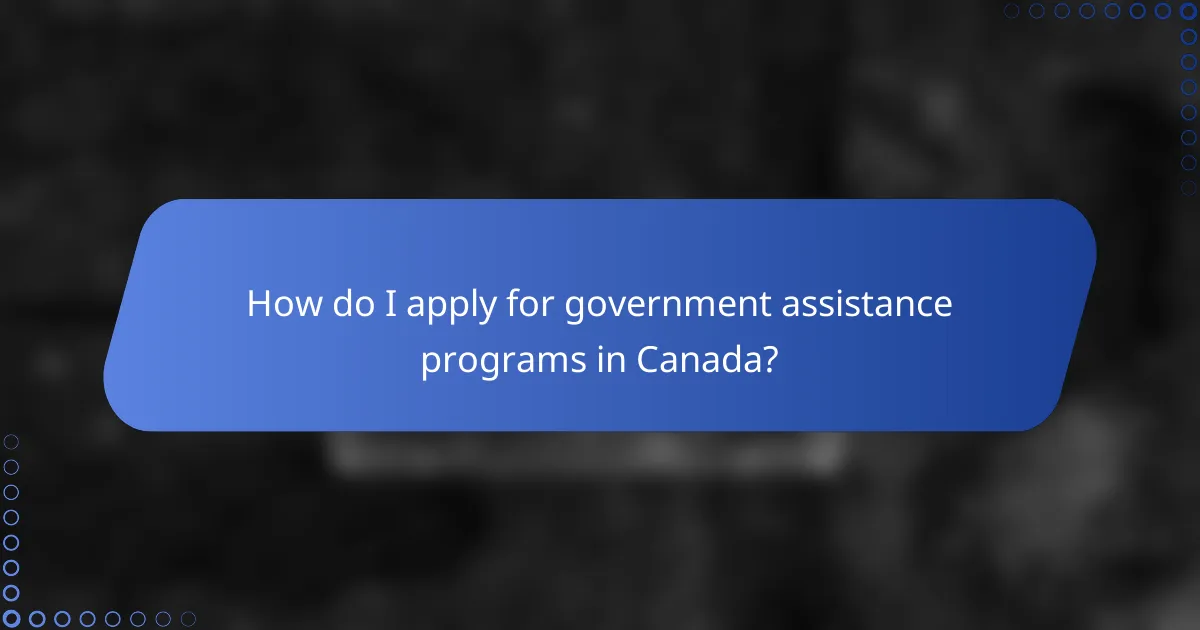
How do I apply for government assistance programs in Canada?
To apply for government assistance programs in Canada, you typically need to complete an application form, which can often be done online. Eligibility varies by program, so it’s essential to review the specific requirements for each assistance type before starting your application.
Online application process
The online application process for government assistance programs in Canada is generally straightforward. Most programs have dedicated websites where you can fill out and submit your application electronically. Ensure you have a reliable internet connection and a valid email address for communication.
After submitting your application, you may receive a confirmation email. Keep this for your records, as it will contain important information regarding your application status.
Required documentation
When applying for government assistance, you will need to provide various documents to support your application. Commonly required documents include proof of income, identification, and any relevant financial statements.
It’s advisable to check the specific program’s website for a complete list of required documentation, as this can vary significantly between programs. Having all necessary documents ready can expedite the application process.
Application deadlines
Application deadlines for government assistance programs in Canada can vary widely depending on the specific program. Some programs may have fixed deadlines, while others accept applications year-round.
To avoid missing out, regularly check the program’s official website for updates on deadlines and any changes to application periods. Setting reminders can help ensure you submit your application on time.
Follow-up procedures
After submitting your application, it’s important to follow up to check its status. Most programs allow you to track your application online using a reference number provided during submission.
If you have not received any communication within a specified timeframe, consider reaching out to the program’s support team for assistance. Being proactive can help resolve any issues that may arise during the processing of your application.
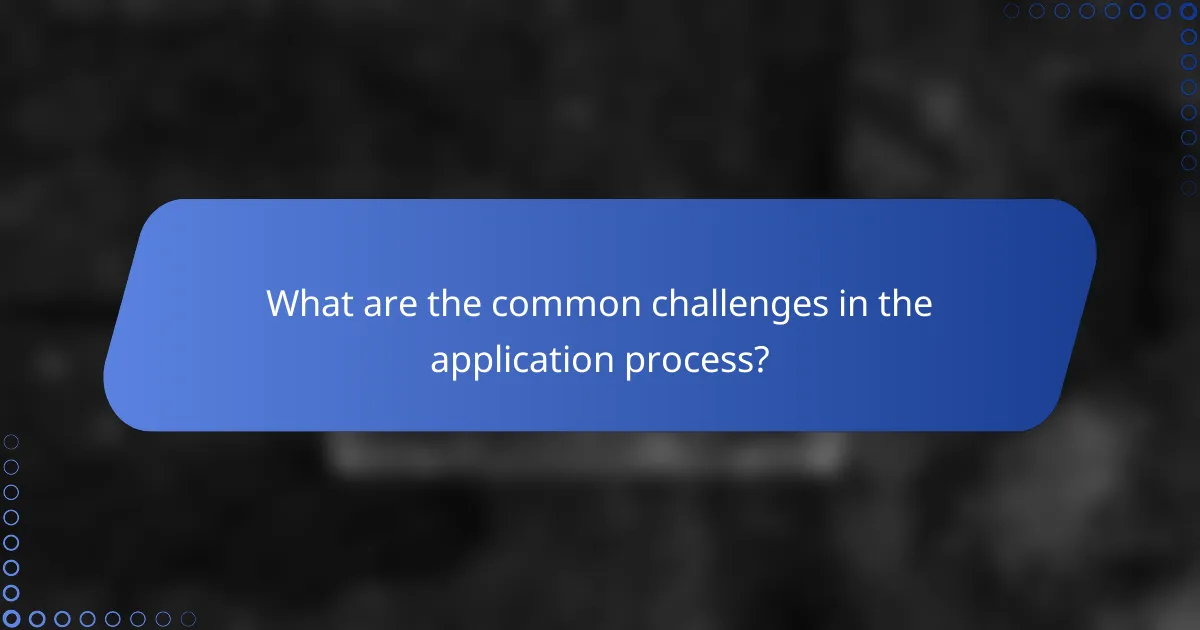
What are the common challenges in the application process?
The application process for government assistance programs often presents several challenges that can hinder success. Common issues include documentation errors, misunderstandings of eligibility criteria, and delays in processing applications.
Documentation errors
Documentation errors are a frequent obstacle in the application process. Inaccurate or incomplete forms can lead to rejections or delays, requiring applicants to resubmit their information. It’s crucial to double-check all documents for accuracy and ensure that all required paperwork is included.
Common documentation mistakes include missing signatures, incorrect identification numbers, and failing to provide necessary supporting documents. Keeping a checklist of required documents can help prevent these errors.
Understanding eligibility criteria
Misunderstanding eligibility criteria can result in wasted time and effort when applying for assistance programs. Each program has specific requirements based on factors such as income, residency, and family size. Applicants should carefully review these criteria before starting their applications.
To clarify eligibility, consider reaching out to program representatives or utilizing online resources that explain the requirements in detail. This proactive approach can help ensure that applicants meet the necessary qualifications from the outset.
Application delays
Application delays can significantly impact access to government assistance. Factors contributing to these delays include high application volumes, incomplete submissions, and processing backlogs. Understanding the typical timelines for different programs can help set realistic expectations.
To minimize delays, applicants should submit their applications as early as possible and ensure all information is complete and accurate. Following up with the relevant agency can also provide updates on the status of the application and identify any potential issues early on.
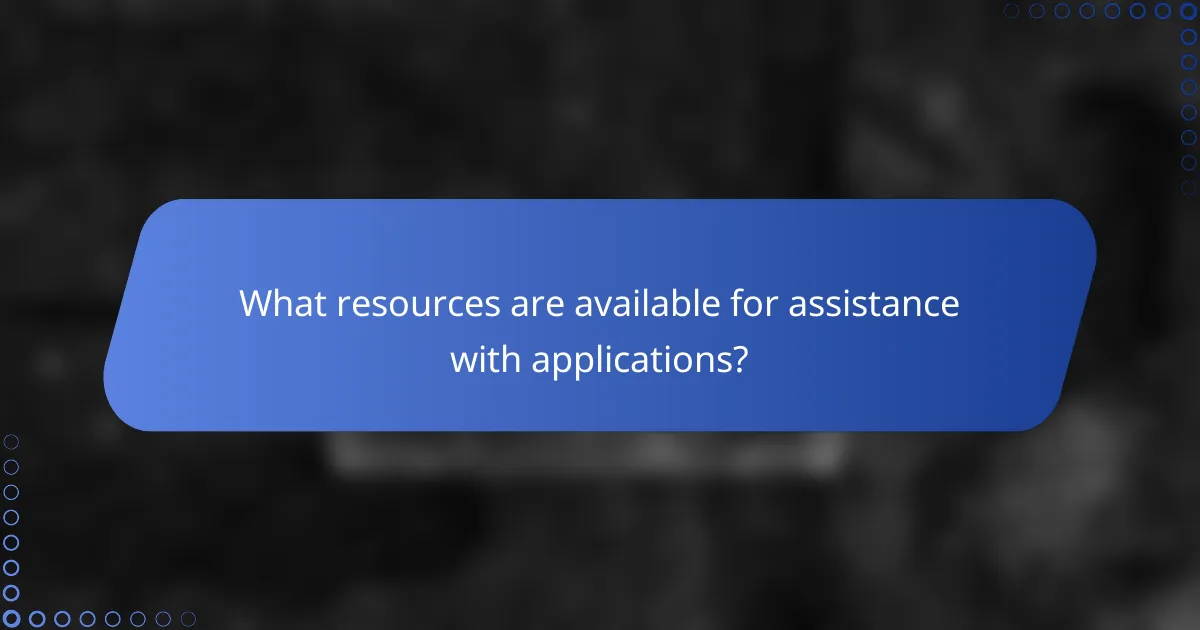
What resources are available for assistance with applications?
Numerous resources can help individuals navigate the application process for government assistance programs. Community organizations and government websites are two primary avenues where applicants can find support and information.
Community organizations
Community organizations often provide personalized assistance with applications for government aid. These groups may offer workshops, one-on-one consultations, and access to resources that simplify the application process. Examples include local non-profits, faith-based organizations, and advocacy groups.
To find a community organization near you, check local directories or search online for terms like “assistance programs” followed by your city or state. Many organizations also provide multilingual support, making it easier for non-native speakers to get help.
Government websites
Government websites serve as a crucial resource for information on available assistance programs and their application processes. Websites like Benefits.gov in the United States or similar platforms in other countries list various programs, eligibility criteria, and application steps. They often include FAQs and contact information for further inquiries.
When using government websites, ensure you are on an official site to avoid misinformation. Bookmark relevant pages for easy access, and consider using online tools or calculators provided to assess your eligibility before applying.
